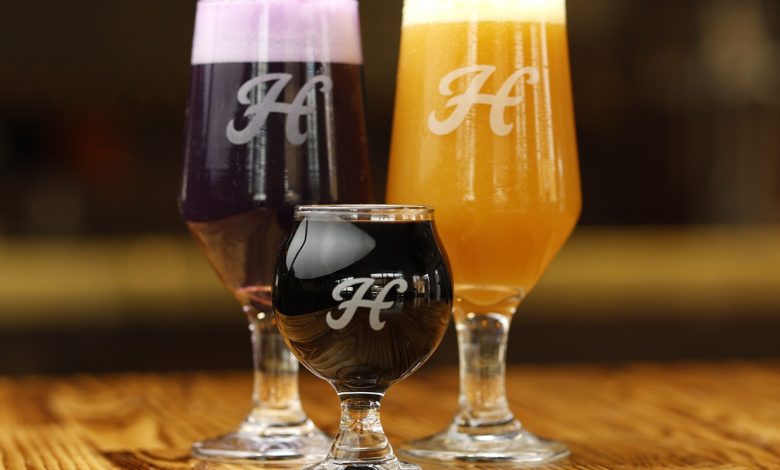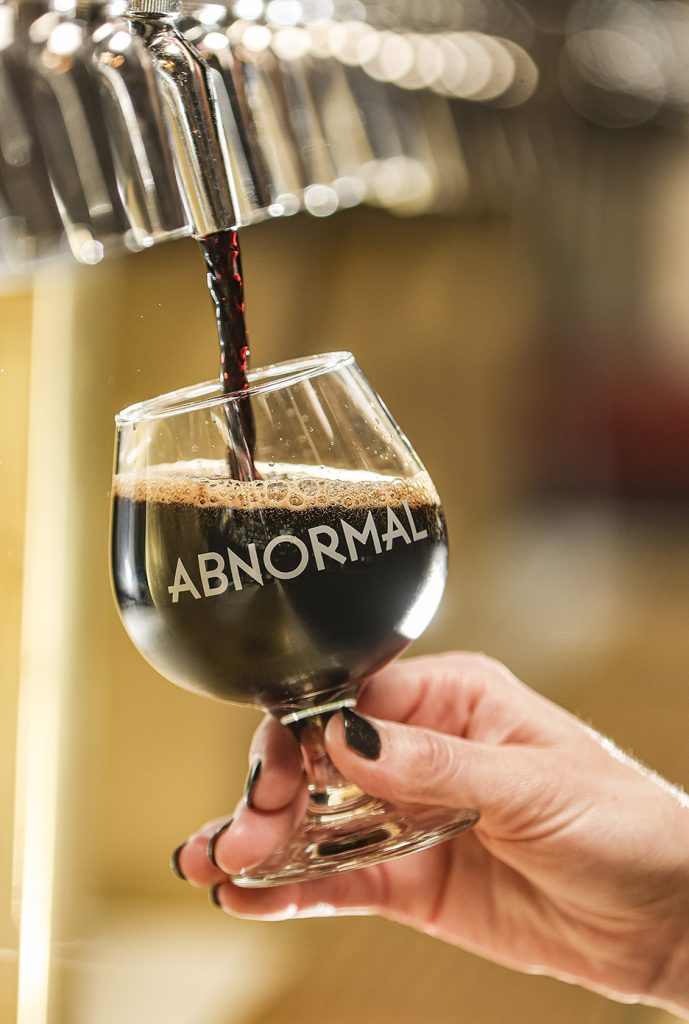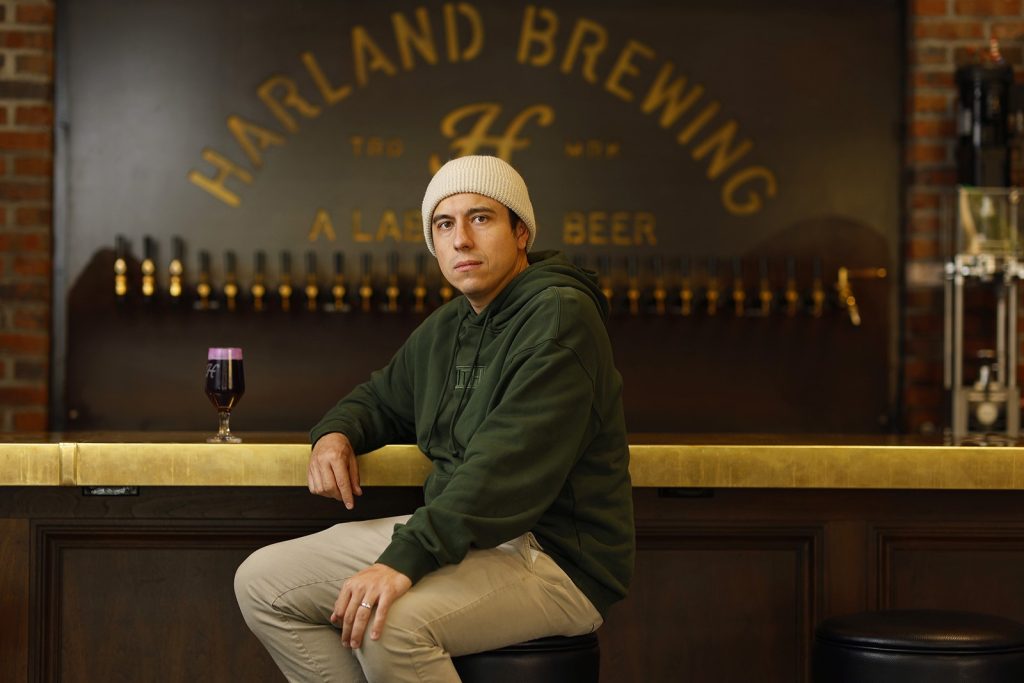
When it comes to craft beer, the India pale ale is king. IPA in its many iterations—West Coast, hazy, imperial, session and fruited to name but a few—has been the top-selling style of beer in the U.S. for a decade. In recent years, that bold, hop-driven beer subsect has seen its greatest competition come in the form of lower-alcohol, easy-drinking lagers, including those of the low-calorie ilk, which are experiencing an industry-wide renaissance.
Given the above, it would surprise many casual drinkers to learn that the lion’s share of the beers that are most sought after by nth-degree craft fans belong to a stylistic subsect known as “pastry beers.”
This niche class of beers is crafted to convey familiar dessert flavor profiles in liquid form. Its origins trace back to the pastry stout. In most cases, these beers achieve confectionery character from lactose. This unfermentable, dairy-derived “milk sugar” lends added sweetness and contributes a silken viscosity similar to melted ice cream. Additional dessert flavors are introduced by using everything from chocolate, vanilla, maple, fruit and spices to candy, sugary breakfast cereal or baked goods such as doughnuts, cookies and cinnamon rolls, which are added during the beer-making process.
Pastry beers are the most indulgent on the market. Most are limited releases that aren’t available year-round or sometimes ever again. They command some of the highest prices, particularly varieties aged for prolonged periods in spirit barrels. This is especially true on the secondary beer market where some can sell for hundreds of dollars per bottle. That online arena is one of the few places to procure many of these beers, which are typically sold through individual breweries’ members-only fan clubs or via presales that sometimes involve a lottery system to gain access due to exorbitant demand.
“People love desserts, and pastry beers satisfy that craving while drinking alcohol,” says Derek Gallanosa, head brewer for Moksa Brewing, a prominent producer of modern beer styles in Rocklin, California. Prior to moving to that Sacramento suburb in 2017, Gallanosa rose to prominence brewing pastry stouts at Abnormal Beer Co. in Rancho Bernardo. “I first started noticing dessert-inspired beers in the market around 2008, but the rise of the style was around 2012. At that time, they were novelty beers that were brewery-only limited releases aimed at a niche market, but as time progressed, breweries started to see the interest in these styles among the general public.”

Gallanosa credits international brewing operation Mikkeller (which operates a tasting room in San Diego’s Little Italy) and U.S. brewing companies Prairie Artisan Ales and The Bruery for pioneering pastry beers. Examples include Mikkeller’s Træblod bourbon barrel-aged maple- and coffee-infused stouts, multiple versions of which are released annually with different flavor profiles that have included mint chocolate, Bananas Foster and blueberry waffle. Prairie’s coffee, vanilla, cacao nib and chile-infused stout, Bomb!, was an industry forerunner along with The Bruery’s broad portfolio of sweet, high-octane stouts like its bourbon-barrel-aged, hazelnut-infused Grey Monday, which gave way to an entire Bakery series emulating baked goods.
“These dessert beers are a labor of love. They are expensive and take about twice as long to create than most other beers, and much longer if they are barrel-aged,” says Gallanosa. He points out that producing pastry beers using real ingredients (as he does) versus the host of flavor extracts on the market increases costs and labor significantly, but the fervency of the cult sect of consumers thirsting for pastry beers justifies all the energy, time and money involved.
“Right now, we are experiencing a heavy demand for our barrel-aged dessert stouts whenever they become available,” says Gallanosa. He points to a pair of recent Moksa releases, a stout aged in Old Fitzgerald wheated bourbon barrels for 19 months then treated with coconut, vanilla, and hazelnut coffee called Pastry Mode, and a coconut-vanilla stout aged in apple brandy barrels for 22 months then Thomas H. Handy rye whiskey barrels for an additional 15 months dubbed Midnight Abundance. “We are talking about releases that are around 500 bottles, limit two-per-person and in-person only, and we still have enough people waiting at our door well before we open to sell out the entire offering.”
Considering how little these saccharine offerings resemble traditional ales and lagers, their appeal may seem mysterious, but it’s based on human nature.
It’s a pleasure-inducing style, especially when the beer resembles a dessert that you have an emotional attachment to. Adults who grew up loving German chocolate cake will be attracted to a 12 percent ABV (alcohol-by-volume) stout with coconut, vanilla and cacao nibs.”
Derek Gallanosa, Head Brewer, Moksa Brewing
Nick Marron, director of brewery operations for Scripps Ranch-based Harland Brewing agrees. “More than just the style, what drives excitement surrounding these beers is how drinkers can connect with them. By brewing beers that spark a sense of nostalgia or provide a personal connection, it helps develop a strong relationship with our fans.”
Marron says Harland’s pastry stouts always sell quickly. So, too, do their smoothie sours, tart ales thickened by a combination of fruit puree and lactose. In addition to fruits and berries, Harland’s takes on this recent stylistic addition to the beer world have included vanilla, graham crackers, granola and marshmallow fluff. But it’s another style on the lighter side of the pastry spectrum, Ube Milkshake IPA, that’s become one of their most celebrated beers.
That beer’s namesake ingredient, a purple sweet potato indigenous to the Philippines, is combined with toasted coconut, coconut milk, coconut water and a coconut-nuanced hop varietal called Sabro to produce a purple beer mimicking desserts found in the northern island nations of Oceania. Due in part to its unique coloring, it was an instant hit when it debuted in 2019. Since then, it’s taken on a life of its own.

“It’s transformed into something far beyond what I could have dreamt,” says Marron. “The first time around, Ube was released as part of a couple of island-inspired beers, and we had live music from local island reggae band, Tribal Theory. The day was nuts and it was then we decided we wanted the day to transcend the beer.”
Fast forward to 2022 and “Ube Day” has grown into a September invitational beer festival with owners and brewers from 29 of the most popular breweries in the country flying in from Maui, Miami and everywhere in between to serve their beers—many of which were of the pastry variety—at Harland’s headquarters. Like its eponymous pastry beer, this year’s event sold out.
As previously noted, sales of lighter-bodied lagers are on the rise. This dovetails with consumers’ more health-conscious tendencies following increased alcohol consumption during the pandemic. While an average IPA comes in between 6.5 and 7.5 percent ABV and 250 to 350 calories per 16-ounce serving, 4 to 5 percent ABV craft lagers register around 100 to 200 calories and have a significantly lower carb count.
When asked why pastry beers, the most alcoholic, carb and calorie-heavy (450-700) on the market, are thriving at the same time as the lowest ABV, carb and calorie styles, Gallanosa offers a theory. “Some people want to be wowed with decadent flavors and either don’t care about the caloric intake or are willing to sacrifice their health for a moment of pastry bliss.”
It’s important to note that pastry fans do not exclusively drink these styles of beer. They are seen as special-occasion, experiential beers and, due to their heaviness, bottles are typically opened in a group setting and shared by several enthusiasts. Similarly, costs associated with acquiring the beers are sometimes shared.
Marron, whose portfolio of beers at Harland is made up mostly of IPAs and lagers, understands the need for balance even with an operation like his that has gained a sizable following for its pastry beers. “For every pastry-beer drinker, there’s someone who wants to be able to drink several pints of something light and crisp. Both are difficult to execute but serve different spaces.”
This article originally appeared in the Business section of the Tuesday, January 3, 2023 edition of The San Diego Union-Tribune

